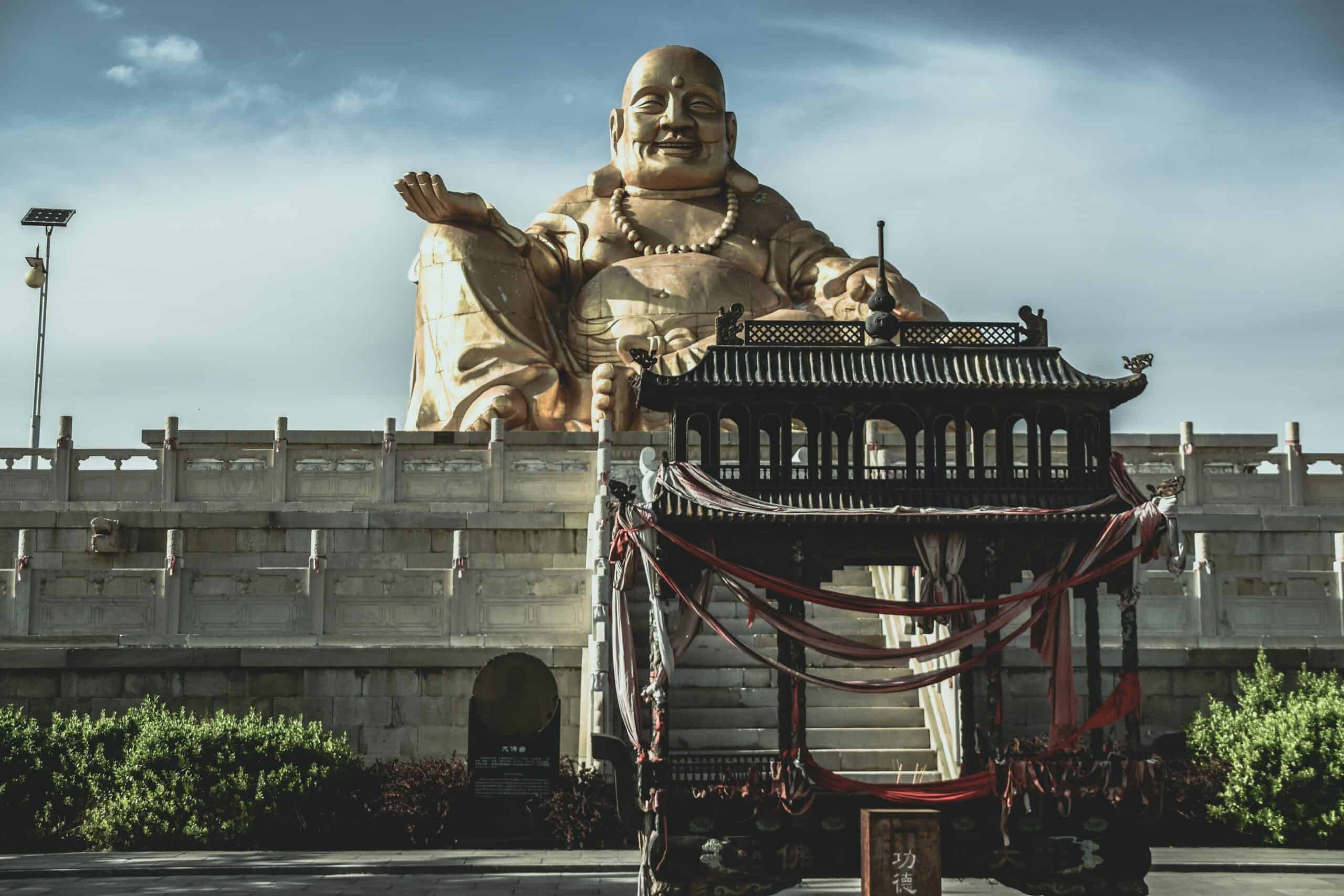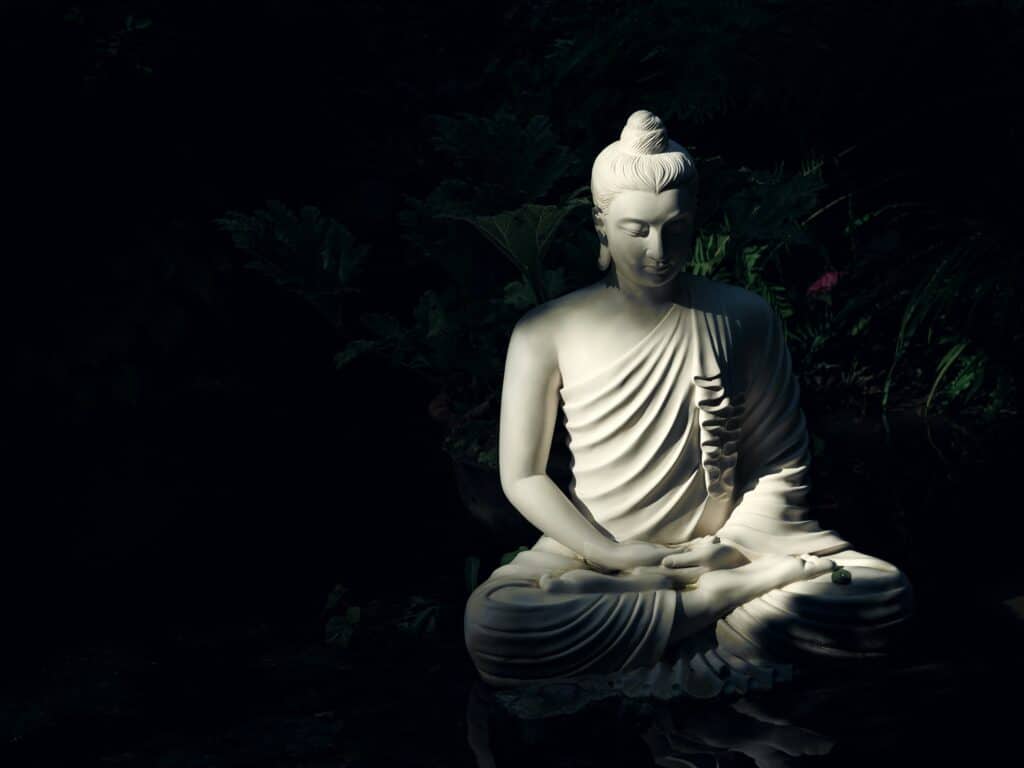Buddhism, a tradition steeped in profound philosophy and intricate teachings, offers a rich tapestry of terms that are as enlightening as they are complex. “A Dictionary of Chinese Buddhist Terms” by William Edward Soothill and Lewis Hodous serves as a key to unlocking these concepts. Let’s delve into some of the most intriguing terms from this dictionary, exploring the profound meanings they hold.
You can find a copy of the dictionary at the end of this article1.
About The Authors: Dictionary of Chinese Buddhist Terms
Understanding the backgrounds of William Edward Soothill and Lewis Hodous is important in appreciating the depth and authenticity of ‘A Dictionary of Chinese Buddhist Terms.’ Soothill, with his extensive experience as a sinologist and Methodist missionary, brought a unique perspective to the translation and interpretation of Chinese Buddhist texts. His deep immersion in Chinese culture and language allowed for a nuanced and accurate representation of the terms. Hodous, a scholar in Buddhist studies and sinology, contributed his profound understanding of Buddhist philosophy and its historical context.
Combined, their expertise ensured that the dictionary was not just a mere translation of terms, but a thoughtful and comprehensive guide that bridged cultural and philosophical gaps. This background is essential for readers to understand the authority and reliability of the dictionary, as it reflects a synthesis of scholarly rigor and first-hand cultural experience, making it an indispensable resource in the field of Buddhist studies.
Nian (年): A Year of Significance and Reflection
‘Nian’ primarily means “a year” or “years.” It extends to signify the “anniversary of a death and the ceremonies associated with it,” reflecting the Buddhist emphasis on remembering and honouring the past. The term also relates to the “number of years since receiving the commandments,” highlighting the journey and commitment in a practitioner’s life. In a broader sense, ‘nian’ encompasses the passage of time and its significance in Buddhist practice and philosophy.
Interestingly also, A Dictionary of Chinese Buddhist Terms gives basic translations of nian: “Recollection, memory; to think on, reflect; repeat, intone; a thought; a moment.” This definition captures a different aspect of the term, emphasising the mental process of reflection and recollection. It suggests a deeper, more introspective understanding of ‘nian’, where it transcends its literal meaning of a measure of time, becoming a concept that encapsulates the act of remembering, contemplating, and being mindful of each moment. This variation in interpretation highlights the richness and depth of Buddhist terminology, where a single term can have multiple layers of meaning, each offering unique insights into Buddhist thought and practice.
Below are some more interesting terms pulled out from the dictionary.
Samsara (輪迴): The Ocean of Mortality
‘Samsara’ is poetically described as the “ocean of mortality” or “mortal life.” This term symbolises the cycle of transmigration or rebirths, a central concept in Buddhist philosophy. It illustrates the continuous flow of life and death, encapsulating the Buddhist understanding of the impermanent and ever-changing nature of existence.
Dharma (法): The Law and Truth of Buddhism
‘Dharma’ represents “law, truth, religion, thing, anything Buddhist.” This multifaceted term signifies ordinance, statute, law, usage, practice, custom, duty, right, proper action, morality, and character. It is a cornerstone of Buddhist teachings, encompassing everything from concrete objects to abstract principles, and is revered as the ideal embodiment of Buddhism.
Karma (羯磨): The Deeds That Shape Our Future
In Buddhism, ‘Karma’ refers to “action, work, deed, performance, service, ‘duty’; religious action, moral duty.” It also denotes meetings of monks for various religious purposes. Central to Buddhist thought, karma is the concept that our actions, thoughts, and deeds are the seeds that grow into our future conditions, both in this life and beyond.
Discover More
These terms from “A Dictionary of Chinese Buddhist Terms” offer a glimpse into the profound and intricate world of Buddhist philosophy. They are not just words but keys to understanding a philosophy that has guided millions of people in their spiritual journey. Whether you are a scholar, practitioner, or simply curious about Buddhism, these definitions provide a window into a world of wisdom and enlightenment. Discover more for yourself below!
Also why not check out some of our other blog posts related to the history of mindfulness, its links to religion and many more insightful topics here.

- Source: https://glossaries.dila.edu.tw/data/soothill-hodous.dila.pdf ↩︎



